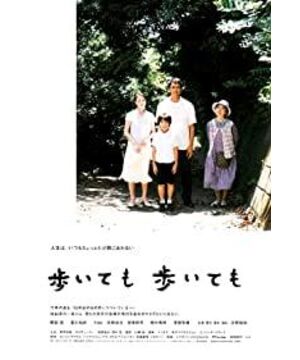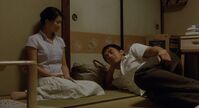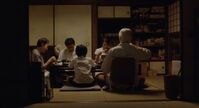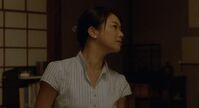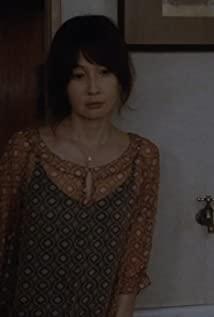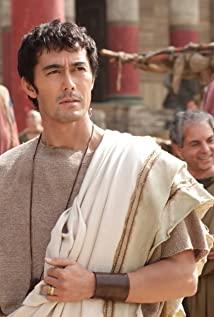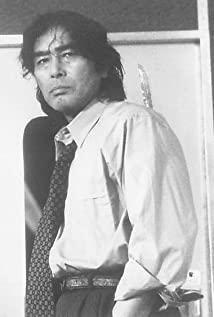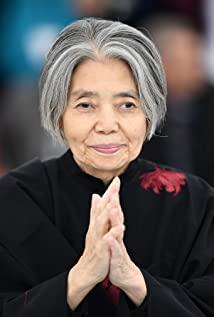Today I would like to share with you a family film with the unique details of life and a taste of life in the East. It includes "No One Knows," "Sea Street Diary," and "Deeper than the Sea" by Hirokazu Koreeda (1962-). "Never Stop" is a 2008 work by Japanese director Hirokazu Koreeda. Standard Collection No. 0554.
Junpei, the eldest son of the Yokoyama family, inherited his father's career as a doctor, but drowned 15 years ago while saving people. On his anniversary, his sister, Chinami, and his second son, Ryoda, returned to their hometown in Yokohama with their respective families. Many wives are widowed and remarried, bringing their children back to their in-laws for the first time.
Grandpa is stubborn, stubborn, and warm-hearted. After retirement, he still cares about his clinic; grandma manages the housework all day long and has endless nags for his family. On a hot summer day, the family cooked and ate in the old house, went to sweep the grave of Chunping, and came back to order a delivery dinner; many families took a bath at their parents' house, stayed overnight, and drove back to Tokyo the next day. The film recounts such an ordinary family life.
The scene in the original poster is a lot of people taking their wives, children, and mothers to go for a walk after visiting the grave of the eldest brother. The green trees were thick and shaded, and the four of them stood together at will and took a group photo. Because the proportion of the photo is close to a square, the background woods and ground form a natural photo frame, and the blank space on the left strengthens this sense of stability to a certain extent, and it is not as dull as the center, so people watching this poster it's time to feel comfortable and at ease.
In the picture, the grandmother is standing on the right, and there is a gap with many families, which refers to the inevitable gap between parents and children who grow up and become a family. Obviously, both sides are affectionate, but they always don't match. The color tone of the photo and the composition of the poster are very Japanese.
A line of small characters—"Life, Combined with the title of the movie, it means "I keep walking on the road of life, but it is always too late." Although helpless, it implied peace after accepting this fact. The film uses a special day to diffract the long years of the Hengshan family for more than ten years. In the simple and straightforward narrative, the taste of life is revealed in it.
Before appreciating the CC poster, I would like to mention the French version of the movie poster. I think the CC poster may be adapted from this poster. The characters in the picture are the same as in the original version, but they have been grouped again, and the two generations and two pairs of mother and child are distinguished by the contextual relationship.
The mother walking in front looked after her son and looked very happy because it is natural for a mother to take care of her young children; the mother and son walking in the back looked in the same direction at the same time, showing a somewhat dazed look. Combined with the fact that many of the people in the film are not promising people, the elder brother, who has always been considered inferior to an early death, is now unemployed. Even though he is much taller than his mother, he doesn't know how to get along with her. Maybe he is confused about how to take care of her. This photo takes advantage of the perspective of the road, so it is suitable for a rectangular format. I used warm-toned film to freeze this moment and make it more timeless.
CC used oil painting to repaint the movie poster.
Even if not combined with the film, the painting alone is very much appreciated. The sky, the trees, the road, and the people; the picture is simple and clear. The pavement, which is actually grey, abstracted into yellow according to the temperature felt, meanders forward from our perspective.
The children walked in front, many walked in the middle, and the wife followed behind with a parasol. The three did not walk together and did not appear to be very close. Such a dynamic picture conveys a lot of information. On the surface, it is because the child is lively and active and likes to take the lead, while the wife walks behind because of physical strength and high heels; the underlying reason may be that the child does not fully accept his new father, and the wife remarries because of widowhood and has many friends. It is also difficult to say that they are completely connected through love.
This painting is the symbol of the entire film. The peaceful and peaceful daily life of the family has caused subtle conflicts due to the untimely death of the eldest son, the special status of the daughter-in-law, and various trivial matters. These conflicts make the film more delicate, real, and touching.
The previous two posters have hidden the role of grandfather, and CC has focused on the younger generation. Because the elders are the reference for the younger generation on the road of life, and because of the commitment to the elders, there will be fulfillment and non-compliance. The elderly generally wait and respond. From going to a football game with their father, to shopping with their mother in a private car, to the choice of a life partner, whether it can be achieved in time is a problem that the younger generation has to face.
It is a kind of narrowing to understand that "the road of life keeps on walking, but it is always too late" as the younger generation is too late to fulfill the promise to the elderly, but it can be seen from the small to the big, and there will be such emotions among family members to some extent.
The photos on the original posters are very subtle and fit the description very well. The French version of the poster has a clear compositional idea, the content is easy to understand, and the color palette has been slightly adjusted, which is very appropriate as a poster for an imported foreign language film.
CC posters are more like art, and you can appreciate them from the perspective of appreciating paintings. It not only hides the subtle inner conflicts of the characters but also expresses the state and abstract meaning of "Still Walking." It is a very good movie poster.
"Walking non-stop" is just a window designed by the director, and it is part of the so-called "flavor of life." There are still many unspeakable things hidden in the footage of the film, which are worth our time to experience.
View more about Still Walking reviews


